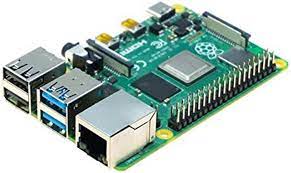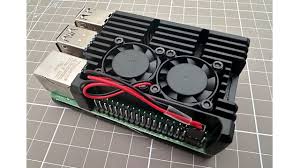Interested in using a Raspberry Pi in your Amateur Radio life? Then Read on…
Introduction
After gaining my Amateur Radio license in late 2022, I initially setup my rig with a Raspberry Pi for digital modes. Primarily this was for FT8 but also for use with Winlink email. The Raspberry Pi 4 came with my Icom IC-705 rig and it worked well for me for a little while.
Once I started with Winlink, it quickly became apparent that the Raspberry Pi was not the best device for Winlink (or maybe I just didn’t get it yet) and that I should invest in a Windows computer. I purchased myself a second hand Microsoft Surface Pro and became very happy with that setup. Primarily it was for portable operations but served 6 months on the desk in my shack. After this time I managed to configure my Apple Mac mini to work with the radio and it has since taken over.
In the last couple of weeks, a couple of members of my radio club has been interested in portable operations, even building portable rigs. This has led to a rekindling of my interest in portable ops and specifically and portable radio kits based on the Raspberry Pi and my IC-705.
Over the last week, Stuart (VK6MK) and I have been working through the configuration on PAT Winlink on the Raspberry Pi and the information below is what we have gleaned from the experience.
What I will say from the outset, is that building a Raspberry Pi for Portable operations is not an easy process. If you aren’t up for the challenge, then possibly you should look at one of the pre-baked images for Amateur Radio use. I list these at the end of the article.
So Why go back to the Raspberry Pi? Well, for portable operations, there an many features of linux operating system, what will be very useful in the portable and emergency communications setup. Power requirements are greatly reduced when using a Pi and the ability to build a portable rig that is self contained inside a protective case, and make it look smart and professional.
What will you need
- a Raspberry Pi 4 (get the gruntiest one you can as you’ll appreciate it later)
- the associated hardware for a Pi (power sourced, SD card, case etc)
- a Radio (a Shack in the box is the best idea, like the IC-705)
- A carry case to house and protect your project



Basic Pi Preparation
The preparation of a Raspberry Pi has been covered so many times before that I won’t go into the process here beyond saying that you can find thousands of articles and videos on the web to explain the process to you.
Bellow is a couple of resources I find useful.
- **TODO** Find some resources
Amateur Radio Portable Operations
The following is an explanation of the use of Raspberry Pi in portable Amateur Radio operations.
Email – PAT Winlink
Installation of Pat WinlinK.
Upgrade your Raspberry Pi operating system to the latest version suing these commands.
sudo appt-get update
sudo apt-get upgradeInstall FLDIGI Quite for Rig Control
Install from Preferences–>Add/Remove Software
Search for FLDIGI (I usually install all the packages that appear, including JS8Call)
Use the following commands to install PAT Winlink and PatMenu
sudo apt-get install pat
git clone https://github.com/km4ack/patmenu2.git $HOME/patmenu2 && bash $HOME/patmenu2/setup
pat configure
sudo apt-get install libhamlib-utils
rigctl -l | grep 705
arecord -l
sudo systemctl restart pat@piUs the following command to install VaraHF and VaraFM
sudo systemctl restart pat@pi
curl -O https://raw.githubusercontent.com/WheezyE/Winelink/main/install_winelink.sh && bash install_winelink.sh vara_only
wineserver -kWhile you’re trying to install or run vara you might come up against this error:
**TODO** Include screenshot of MSCOMCTL.OCX error
**TODO** Actually find the solution I used to fix the problem.
**TODO**
Email – Emergency Email Server
**TODO**
FT8 – WSJTX
**TODO**
Prebaked Pi Images for Amateur Radio
- HamPi
- BuildaPi
- DigiPi